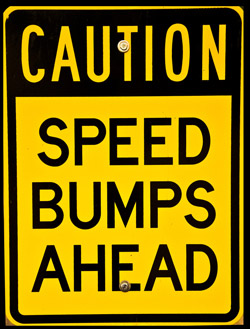 Canadians love road trips, but, a road trip can turn sour if you get a ticket or have an accident. Whether you are heading across Canada, or going south into the U.S., it's important to know what will happen if the open road is marred by a speed bump along the way.
Canadians love road trips, but, a road trip can turn sour if you get a ticket or have an accident. Whether you are heading across Canada, or going south into the U.S., it's important to know what will happen if the open road is marred by a speed bump along the way.
Where Does Your Auto Insurance Cover You?
Canadian auto insurance policies cover you everywhere in Canada as well as in the United States. If you plan to drive even further south, into Mexico, your insurance stops at the border. Car insurance issued outside of Mexico is not valid within Mexico. You can get this (Mexican auto insurance) along with the vehicle permit you'll need at the Mexican border. Among other things you'll need: proof of vehicle ownership, proof of Canadian registration, a valid Canadian driver's licence, your passport and a credit card. Contact the Mexican Embassy in Canada for a full list of what you'll need if you plan to drive into Mexico.
Tip: Be sure to carry all of your documents (insurance, registration etc.) with you everywhere you go. If you're pulled over, or involved in a collision, you'll need to have everything with you.
Getting a Ticket Away From Home
The rules of the road may vary; by city, province, state and country. Don't wait until there is a police cruiser behind you to find out that what you thought was legal, isn't. Familiarize yourself with the rules of the road of your destination and all points in between.
All of the provinces of Canada have a reciprocal agreement through which they report tickets to each other's driver licensing departments. This means that if you live in Ontario and get a speeding ticket in Manitoba, it will still affect your driving record and can result in an increase in premiums.
If you receive a ticket in the U.S., whether or not it appears on your record depends on whether the state where the ticket was given has an agreement with your home province. Many states have reciprocal agreements with Canadian provinces, but it differs from state to state and province to province. It's best not to assume that your home province won't find out.
If you receive a traffic ticket away from home you can choose to pay the fine or fight the ticket. Bear in mind that if you choose to fight the ticket, you will likely be required to appear in court in that province or state.
Car Accidents in Other Provinces or Countries
Wherever your travels lead you in Canada or the U.S., your auto insurance will follow.
If you're involved in a car accident, you would do much of the same as if the accident happened in your home town:
- Stay calm and keep safe; get out of harm's way.
- Check for injuries, and call the ambulance if in doubt.
- Call the local police.
- Get the contact details, name and address of all driver's and witnesses.
- Document the make, model, and model year of the vehicle, as well as the licence plate number, state or country and the name of the other driver's insurer.
- Write down the details of the accident: date and time, location, road and traffic conditions. Don't forget to also document the damages.
As soon as you can safely do so, call your insurance company. Your insurance company can help; they see this type of thing all the time. They'll be able to recommend local repair shops if your car is fixable, or help set you up with a rental if it's not. Many travellers make the mistake of waiting until they are back in the country to call their auto insurer. This could complicate matters when making a claim.
No damage. No injuries. No worries?
Perhaps, but just like tickets, if you're in an car accident outside of your home province or country and there is a police report, it could end up on your driving record if a reciprocal agreement exists.
Road trip travel tips and links
Prepare for your travels to avoid unpleasant surprises:
- Before leaving, have a mechanic look over your car and top-up all fluids.
- Pack travel insurance.
- Make sure you pack your proof of auto insurance, ownership, your driver's licence, and vehicle registration.
- Have your auto insurer's phone numbers handy, just in case you need to give them a call.
- You will need a valid passport to enter the United States and Mexico. If you do not already have one, contact your local passport office for information on how to get a passport.
- Map out where the closest Canadian Government offices can be found along your route; they'll be able to help you if you're ever in a bind.
- Visit the Canada to U.S. border wait times table to see how long each border crossings' wait time is; and, when returning, visit the U.S. to Canada table
- Once on the road, it is recommended you limit your driving to 700-800 km per day with 15-minute breaks every 2 hours. Aim to stop driving by dinner, so you can eat and relax for the rest of the evening. This pace however, won't give you much time-if any-for roadside attractions. For that, you'll want to limit your driving to 300-400 km per day.




